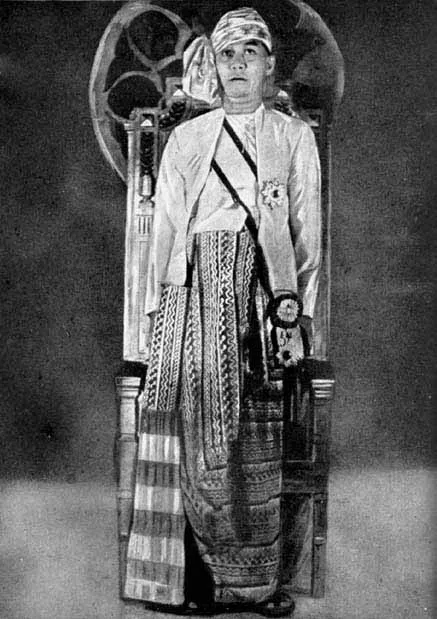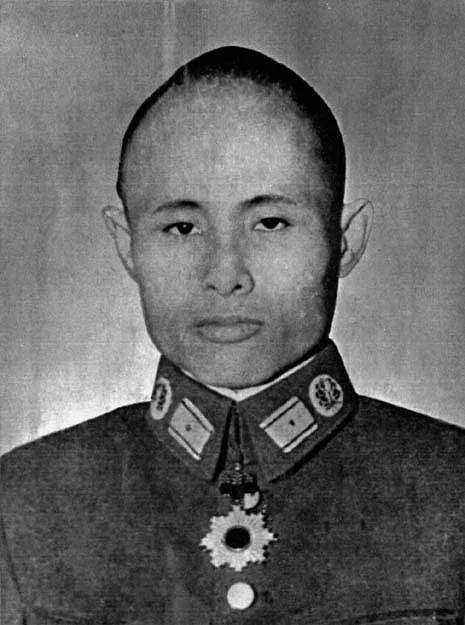![]()
Chapter One
Burma
1942–3
At the end of the disastrous Burma campaign of 1941–2, some 12,000 British and Indian troops and some Chinese marched wearily into the relative safety of India. The vast majority of these troops were in no state to fight, with only 2,000 of them being classed as 100 per cent fit. Most of the others were in various states of exhaustion and were malnourished and disease-ridden. It was not just the military who had suffered during the fighting, and there were thousands of mainly Indian civilians wanting to leave Burma. An estimated 400,000 Burmese and Indians had fled into India, with at least 10,000 dying on the arduous journey. Most of the Indians had been either traders or migrant labourers, and they did not want to stay under the rule of the Japanese. Thankfully for the British military and Indian civilian survivors, once they crossed the Chindwin river the Japanese abandoned their pursuit. The start of the Burmese monsoon also gave the defeated British some breathing space as the Japanese were too weary to fight during the wet season. One Japanese officer, Colonel Hayashi, argued for the continuation of the offensive with the aim of capturing the Indian-Burmese border city of Imphal, to prevent the Allies from using the city as a forward base for ongoing fighting. His arguments found favour with some military planners in Tokyo but the man on the ground, General Iida, knew his men needed a rest. The Japanese offensive came to a virtual stop, but there were clashes between patrols along the Chindwin river. The 23rd Indian Division had moved up to the border from its bases in India to cover the withdrawal of the defeated British-Indian Army, and established a defence line along the Chindwin river behind which the defeated troops began to recover. Many were sent to Imphal, the Indian state capital of Manipur, some 50 miles from the Burmese border, which now took on a new strategic importance as this usually sleepy city became the main base for the Allied war effort on the Burma front and was transformed over a few months into a busy headquarters for the Allied armed forces. The situation in Imphal was chaotic to say the least, with the Japanese expected to move on the town at any time. Fortunately for the British, the Japanese were busy consolidating their position in a territory they had never planned to conquer in the first place. They did not think of pushing into India to ‘liberate’ the oppressed population of the most prized British imperial possession. Under cover of the 1942 monsoon season, the Allied commanders in Imphal began to improve the infrastructure, which was sorely lacking. Roads leading to the town from the rest of India were improved and three airfields were built to accommodate the first RAF reinforcements that began to arrive.
In addition to building up their forces on the ground in Burma, the Allies also looked to improve the organisation of their high command. General Wavell was replaced as C-in-C India by Sir Claude Auchinleck, and instead took up the role of Viceroy of India. Lord Louis Mountbatten took on the pivotal role of Supreme Allied Commander South-East Asia Command (SEAC). At the same time General Slim was given command of the 14th Army in India, a move that was to prove one of the most positive decisions of the Second World War. General Slim was an inspirational leader, bringing a new, more positive attitude to the Allied forces in India. He was convinced that with good medical care and effective training the condition and morale of his demoralised men would improve. In addition to maximising the troops’ performance, Slim also recognised that the infrastructure of the Allied war effort in India had to be greatly developed. Supply dumps had to be built, forward air bases established, existing roads improved and new ones built, and communications updated. The responsibility for operational command decisions on the Burma front was taken away from India Command, leaving its officers free to concentrate on training troops. When Slim took command, he put effective training of the existing and new troops in India at the top of his agenda. Major General Reginald Savory, the former commander of the 23rd Indian Division, was made Inspector of Infantry. In April and May 1943 new roles as ‘Inspector of Infantry’ and ‘Director of Military Training’ were filled with competent officers. But even as the British forces in India were making ready to take the war to the Japanese in Burma, other plans were being prepared.
In mid-July 1942 US General Stilwell, who was in charge of Chinese forces in Burma, had conceived a plan to fight the Japanese. His so-called XY Plan was explained to the Allies and to Chiang Kai-shek, the Chinese Nationalist leader. It involved using between twenty and thirty Chinese Nationalist divisions to invade and hold northern Burma. These troops would be retrained by the Allies, supplied with modern weaponry and equipment, and generally well looked after. Stilwell’s plan also involved the capture of Rangoon, the Burmese capital, using the Royal Navy (once they had gained control of the Bay of Bengal). On 1 August Chiang Kai-shek reluctantly agreed to Stilwell’s plan, although with some reservations. He demanded full British cooperation in the plan, and that the Chinese divisions would be trained and armed by the Allies as promised. Chiang also insisted that his troops must receive good air support from the Allied air forces.
On the other side of the border, in March 1943 the Japanese created a new army-level headquarters, the Burma Area Army, to take control of Japanese forces in Burma. General Masakazu Kawabe was appointed its commander. Under his command were the 15th Army in the north and east of Burma and various units in the south and west of Burma before the formation of the 28th Army in January 1944. Throughout 1943 talks went on in the Japanese headquarters about a possible offensive (or offensives) into India. Arakan in the west of Burma was seen as one route into India, with the main target for any invasion being the important Indian city of Calcutta. Imphal in south-east India was seen as a potential jumping-off point for another advance through the Indian province of Assam.
General Stilwell, the American commander of the Chinese Nationalist Army in Burma in 1942, walks into India. He was accompanied by a hundred people, including his Chinese staff and a number of British, Indian and Burmese military personnel. Included in his party were an American volunteer medic, Dr Seagrave, and nineteen Burmese nurses, who all shared the hardship of the retreat. They arrived in Imphal on 20 May 1942. The ageing commander had lost 14lb during the arduous march. (US National Archives)
A British medical officer tries to bring some order to the chaotic situation in an improvised field hospital during the long retreat from Burma to India in 1942. These men are on the veranda of a government building in the town of Pyinmana, which was on the escape route for the Chinese Nationalist troops. Dr Seagrave set up this emergency dressing station, which patched up the soldiers before they struggled on towards the safety of India. (Author’s Collection)
Dr Ba Maw, the Japanese-installed leader of occupied Burma, stands in his formal dress in front of the pre-1885 peacock symbol of the country. He had been awarded the Order of the Rising Sun with Grand Cordon by the Japanese for his loyalty to them. Ba Maw was a leading pro-independence politician before the war and took the opportunity offered by the Japanese to gain independence for Burma. (Author’s Collection)
Aung San, the young leader of the Thakins (the leading Burmese Nationalists), pictured in the uniform of the Burmese National Army. Along with Ba Maw, he used the Japanese as a vehicle to gain independence for Burma and he served as the commander-in-chief of the BNA. When the war went against the Japanese, he pragmatically made a deal with the Allies and turned the BNA into an anti-Japanese guerrilla force. (Author’s Collection)
The cover of a Japanese pictorial magazine of 1943 features a volunteer of the Burmese Defence Army. Recruited from the Burman population of Burma, the BDA reached a strength of about 10,000 men. When Burma was given its independence by the Japanese, the BDA became the Burmese National Army and was expected to fight alongside the Japanese Imperial Army. (Author’s Collection)
In 1943 the Japanese began to recruit volunteers from amongst the population of South-East Asia to bolster their overstretched occupation forces. This group of Wa tribesmen from eastern Burma have been recruited to act as local guards to defend their village against pro-Allied tribal volunteers. They have been issued with captured Chinese rifles but their ammunition was limited in case they turned against the Japanese. (Author’s Collection)
A Japanese patrol in 1943. The elephants, driven by local howdahs, were useful for traversing the flooded areas of Lower Burma and were used by both sides during the Burma campaign; at least 4,000 elephants were killed durin...







